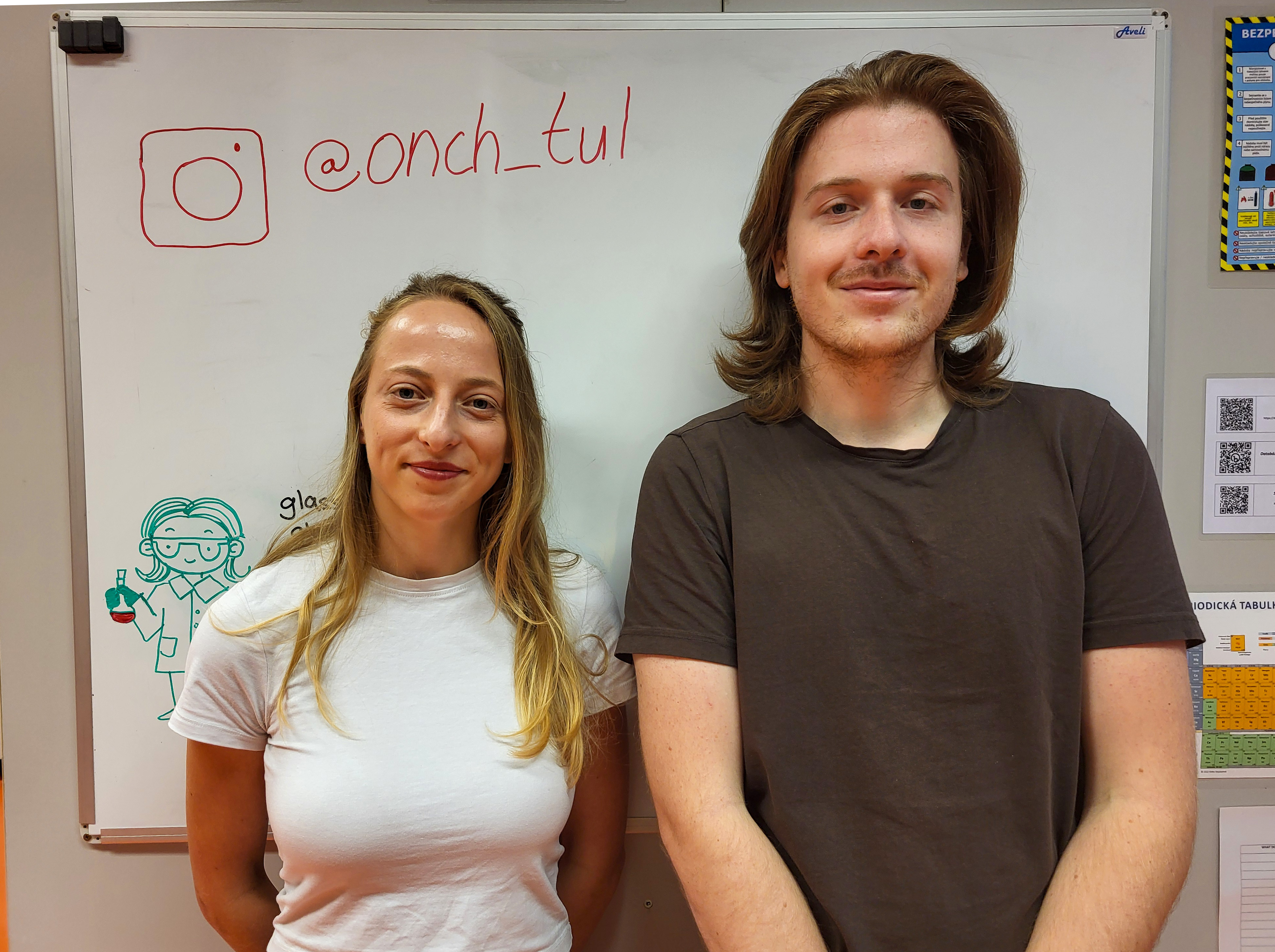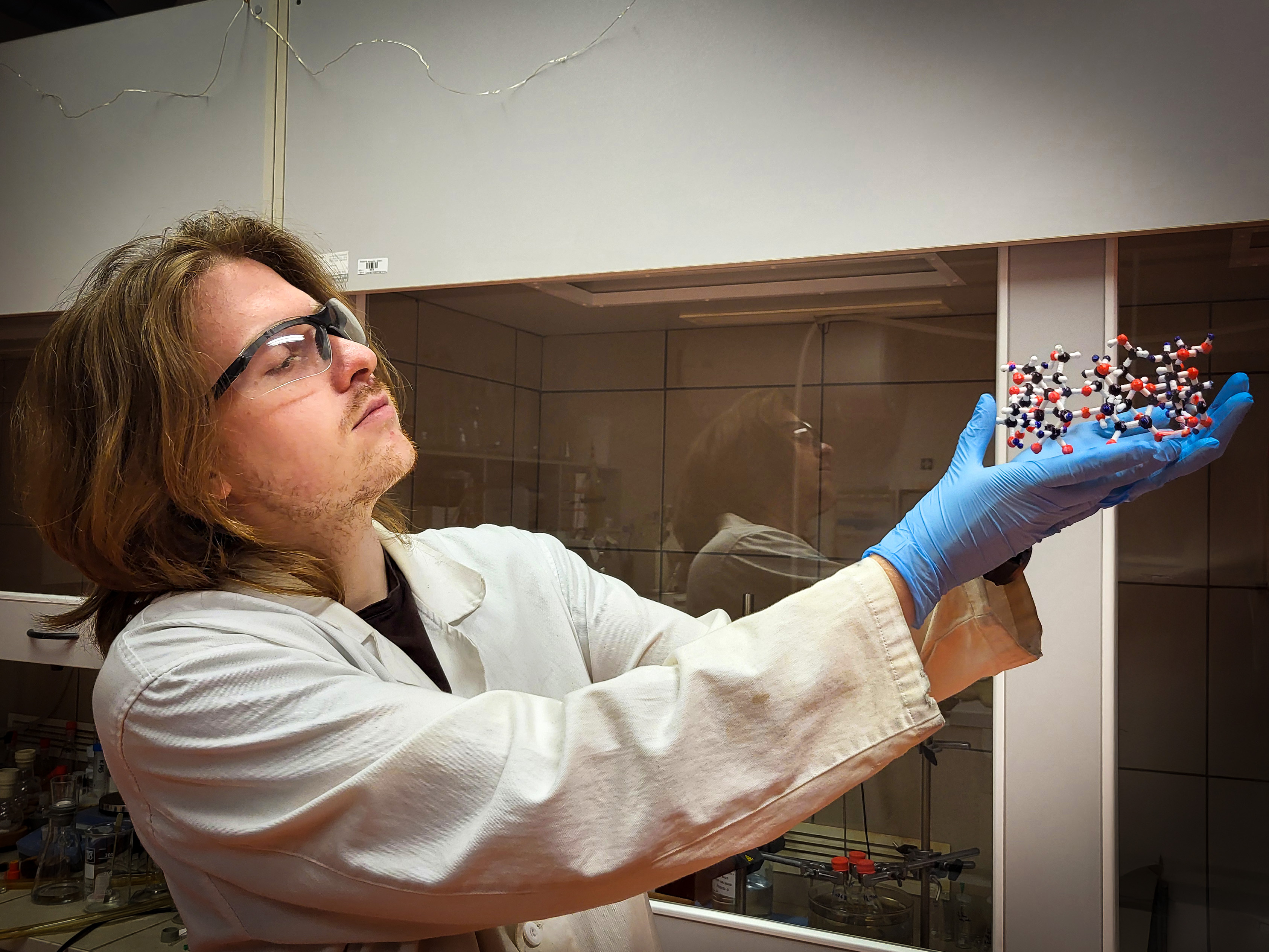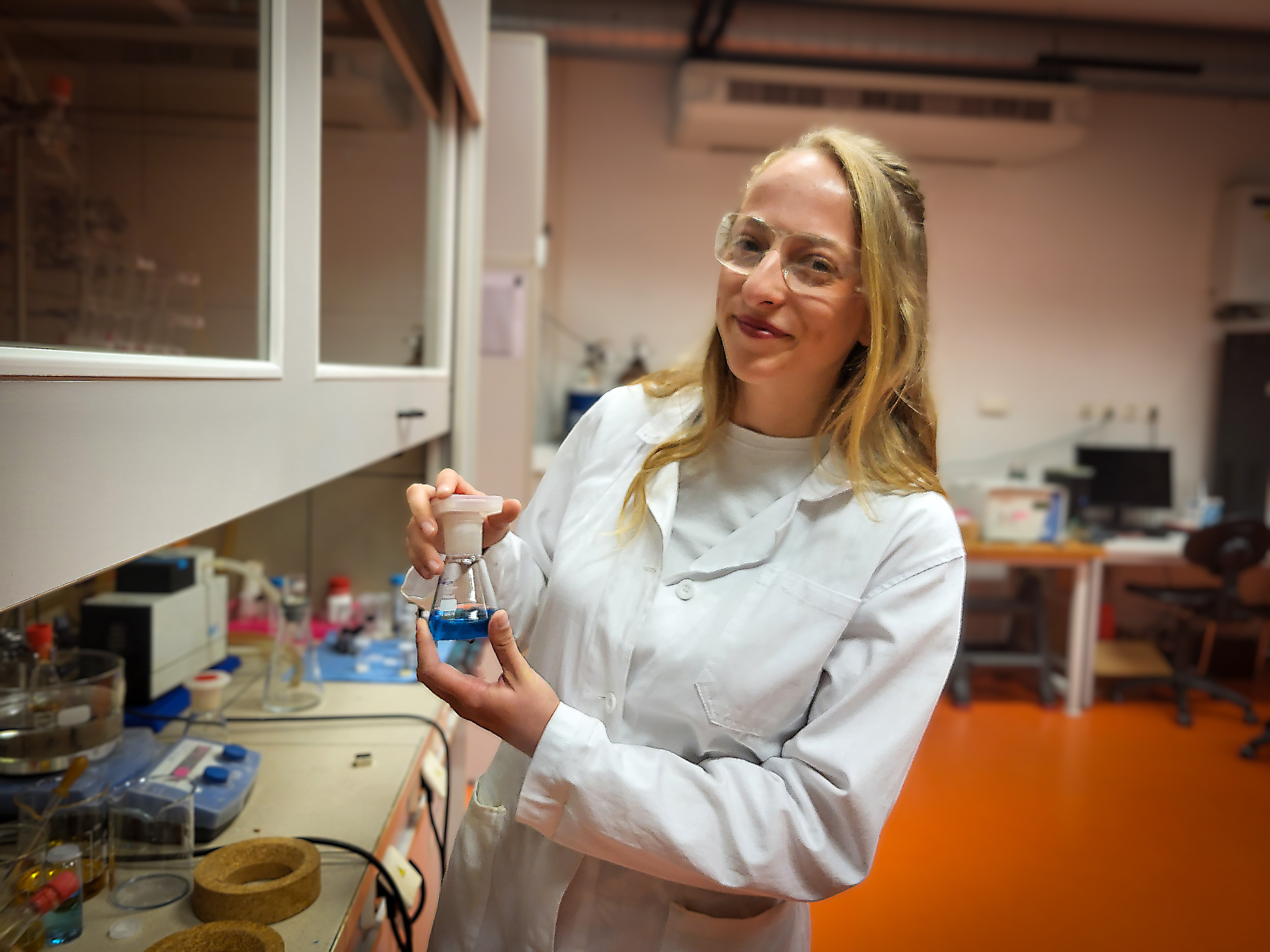Science is great, sharing it is rewarding, say CXI TUL chemists
15. 9. 2025
With short videos on Instagram, they open the doors to the world of the laboratory, where they are looking for ways to clean water from persistent chemicals. Pavlína Konopáčová and David Mareš have already reached thousands of followers, and in October they will present their experiences at the Sdílej vědu! event.
Michal Řezanka, head of the nanochemistry laboratory, came up with the idea that Instagram is popular, so why not set up an account for the laboratory as well. And because Pavla and David were familiar with this social network, it went quickly. The original idea of using Instagram to find industrial partners proved to be a dead end. "We realised that this was not the way forward. So we changed our strategy and are currently building a community of followers to raise awareness about us," they explain.

Anyone can start, the main thing is to persevere
And what are the biggest challenges in popularising science? "Getting started," David says promptly. "And anyone can get started. The most important thing is not to get discouraged when it doesn't work right away. It takes patience and finding your own style and doing it because you enjoy it, not out of obligation," adds Pavlína.
They do everything themselves in the videos. "I can make a short clip in five minutes, but I can easily spend hours on a longer one. For me, the biggest problem isn't editing, but finding the right music," laughs David, who taught himself everything with the help of self-study guides.
Classmates are supportive, but they started from scratch
Their classmates, who are the same age, are enthusiastic about the profile. Outside the laboratory, however, no one really cares. "No one shared our videos, we started from scratch. Fortunately, we have a lot of support from our supervisor, who sometimes gets involved himself."
"It helps us a lot when one of our colleagues comes up with an idea or helps with filming. We have to stick to our posting schedule, and that's not always easy," explain the young chemists. Their fans come mostly from the USA, Asia and, of course, from Czechia.

Rick and Morty in the lab
In their free time, they watch videos on Instagram. The algorithm serves them a lot of scientific content, but they also draw inspiration from non-scientific clips, which they then set in a laboratory environment. "I like Chemistry Daily, for example," says Pavlína. David also finds inspiration outside of Instagram and is a big fan of the series Rick and Morty. "Our humour is a bit harsher, so we don't take offence and we feel free to tease each other. And we usually agree on ideas," he adds.
Science in the background: the fight against persistent chemicals
But behind the attractive videos lies a serious topic: research into how to remove perfluorinated substances (PFAS) from water. These substances, used in Teflon, outdoor clothing and firefighting foams, are dangerous because they do not decompose in nature and therefore accumulate in living organisms. They have been found in the blood of humans and animals across the planet, and even in Antarctica.
Their risks began to be highlighted thanks to the DuPont case in West Virginia, USA. A farmer was dealing with the prolonged death of cows, but it gradually became apparent that the factory had been polluting the surrounding environment for a long time with one of the many forms of PFAS used in the production of Teflon. Further revelations showed that the substance threatens unborn foetuses and is linked to certain types of cancer, thyroid disease and high cholesterol levels. It was this scandal that sparked a global debate and the gradual regulation of forever chemicals.

Cyclodextrins: a weapon against PFAS
Research at CXI TUL is trying to find a solution to the global PFAS problem. The team has already shown that the key is cyclodextrins, which are ring-shaped cyclic sugars that can capture PFAS molecules in their cavity and thus filter them out of water.
Surprisingly, cyclodextrins are more effective than commonly used activated carbon. And they have another advantage: they are cheap because they are produced by breaking down starch, so they are actually a special form of sugar.
"So far, we are binding them into insoluble polymers that can capture these compounds in water," the researchers explain. "In the future, we want to bind them to magnetic nanoparticles so that we can easily separate them from the water using a magnet."
Connection between the Czech Republic and the USA
The research is supported by several projects. Pavlína mentions, for example, a project by the Ministry of Education, Youth and Sports, in which they are collaborating with the University of Rhode Island, where Pavlína completed an internship. In the USA, the PFAS problem is even more pressing, as drinking water is often contaminated above the permitted limits. "It was beneficial to see how they do sorption experiments there, and also to go out into the field and take samples," she says.
The situation in the Czech Republic is good, although PFAS concentrations are higher in the Jizera Mountains due to the use of cross-country skiing waxes, and contamination also occurs at airports, for example, due to firefighting foams.
Above all, more information
The Instagram community, positive reactions from followers, the opportunity to speak at conferences and be inspired by others – Pavlína and David see all this as a bonus. But the main thing for them is the research itself. And if their videos spark an interest in chemistry and bring young people into the laboratory, then their work has meaning not only in the laboratory, but also outside it.





.png)
.jpeg)
.png)
.jpeg)
.png)
.jpeg)
.png)


.png)